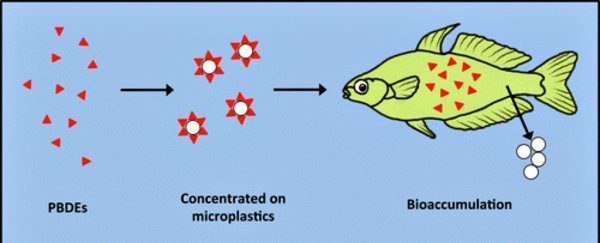Scientists have found worrying evidence that fish are becoming toxic, as their environments are being polluted with billions of microbeads – the tiny plastic particles commonly found in face scrubs, body wash, and other cosmetics.
Several governments, including the US and Australia, are in the process of phasing microbeads out, but based on their findings, researchers are pushing for an immediate ban.
We've known for a while now that microbeads act like tiny magnets for pollutants, capable of concentrating these substances up to 1 million times. And that's pretty worrying, seeing as 8 trillion of these tiny plastic beads are entering the waterways of the US alone, every single day.
But even though it's long been suspected, this is the first study to show that the toxins attached to microbeads can contaminate fish directly, with a team from RMIT University in Australia finding that fish can absorb up to 12.5 percent of the pollution from microbeads.
"We know generally that if someone eats a fish, they risk eating any pollution that may be in the fish," said lead investigator Bradley Clarke.
"Our next step is to determine the implications of our findings on microbeads for public health, working out the significance of this exposure pathway and precisely measuring how much pollution could be entering this human food chain."
While you probably never give them a second thought, microbeads are in a huge amount of different cosmetic products, from facial scrubs to toothpastes. They're those ultra-tiny plastic balls that feel rough when you use them. Since we don't ingest them, most people had assumed these tiny plastic beads were harmless.
But all of that changes when the microbeads are washed down our sinks and into the ocean, where fish can't help but to consume them, because they're so small.
These microbeads then end up sitting in the stomach of fish, and, just like any plastic, they attract and concentrate toxic chemicals – including a class of pollutants called polybrominated diphenyl ethers (PBDEs), which are known to cause neurological problems, decreased immune function, and even fertility problems.
To figure this out, Clarke and his team fed Murray River rainbow fish microbeads that had been spiked with PBDEs, in levels that mimic the real-world environment.
They then tested the amount of PBDE present in the fish tissue after 21 days, and compared it to a control group that hadn't eaten microbeads.
The results showed that up to 12.5 percent of the PBDEs on the microbeads had leached into the tissue of the fish – which is a problem, because that's what we end up eating.
"Our research shows for the first time that persistent organic pollutants accumulate in the tissue of fish that eat microbeads," said Clarke.
The researchers have yet to prove that these pollutants can leech into the human system from fish tissue we eat, and they still need to replicate this result across more than one fish species.
But considering the potential health problems involved in ingesting chemicals such as PBDE, the researchers say it's not worth the risk of keeping microbeads on the shelves.
Basically, we are what we eat, and that isn't always a good thing when the healthy-looking fish we had for dinner was full of pollutants.
"It would be nice to see an immediate ban, and the companies investing money into remediation costs. Microbeads should never have been in products in the first place," Clarke told The Sydney Morning Herald.
"We shouldn't have to wait one or two years for these products to be banned, because in that time, billions more microbeads will be released into the environment."
Earlier this year, the US put in place a law banning cosmetic companies from using microbeads after July 2017, and the sale of products containing them will be banned the following year. The Australian government is talking about phasing microbeads out in 2018.
Let's hope research such as this study help to speed up that process.
The team's findings were publishing in Environmental Science and Technology.
